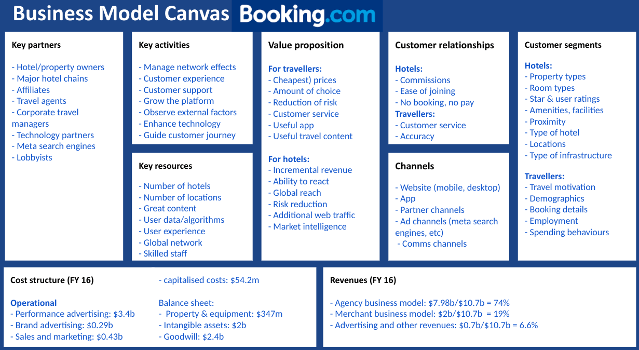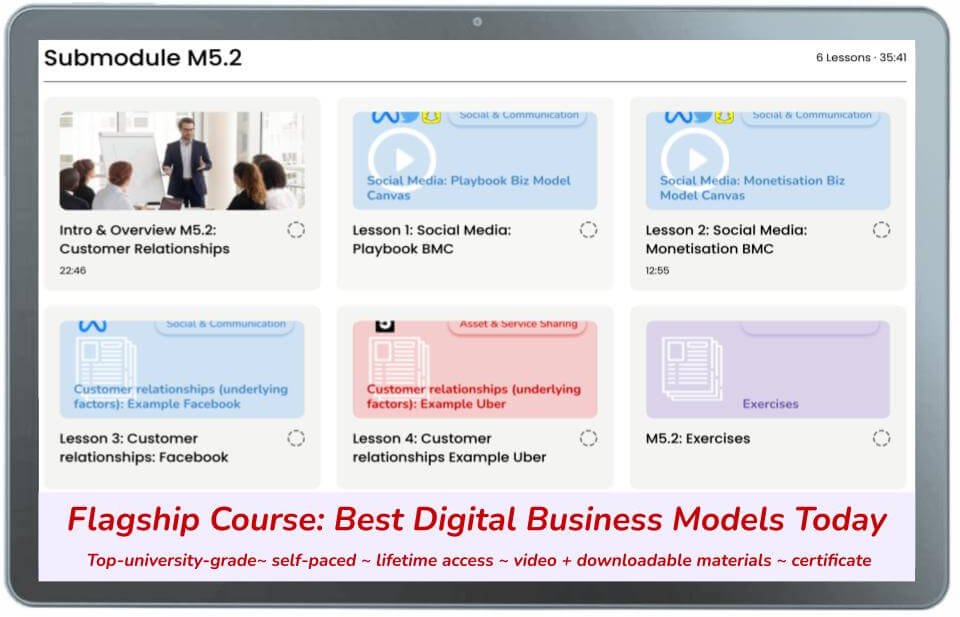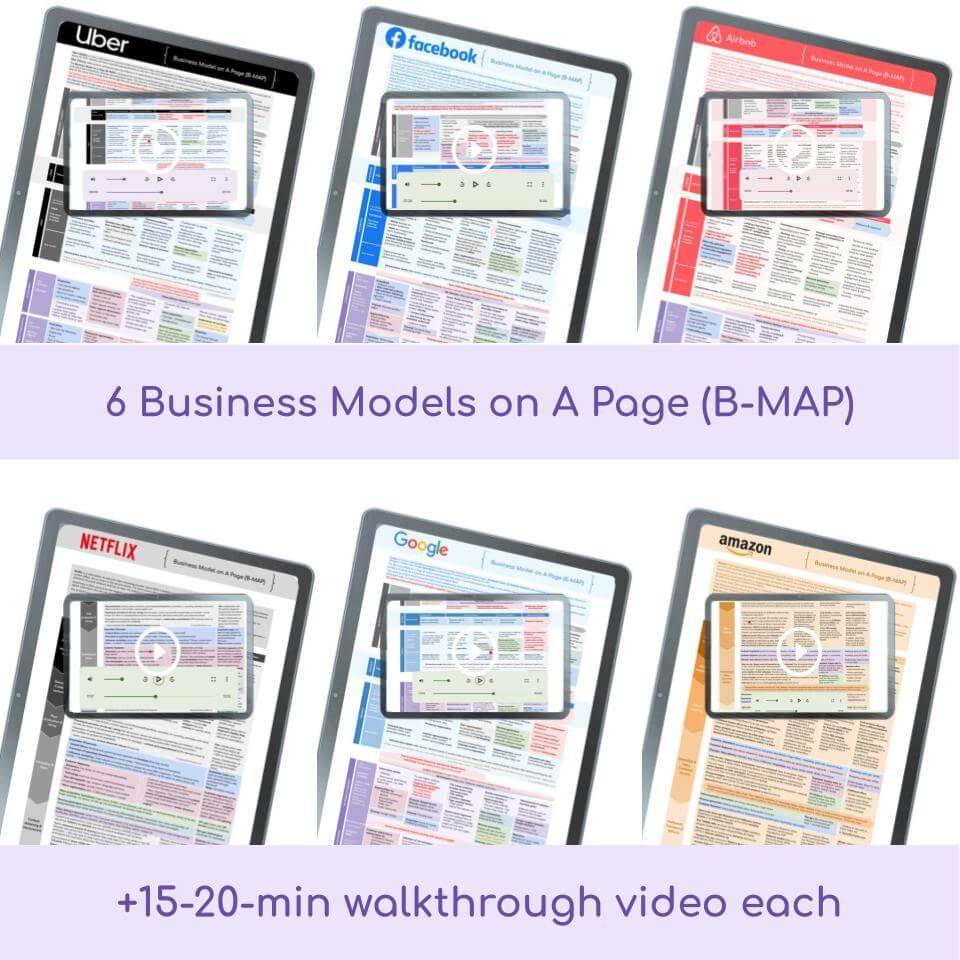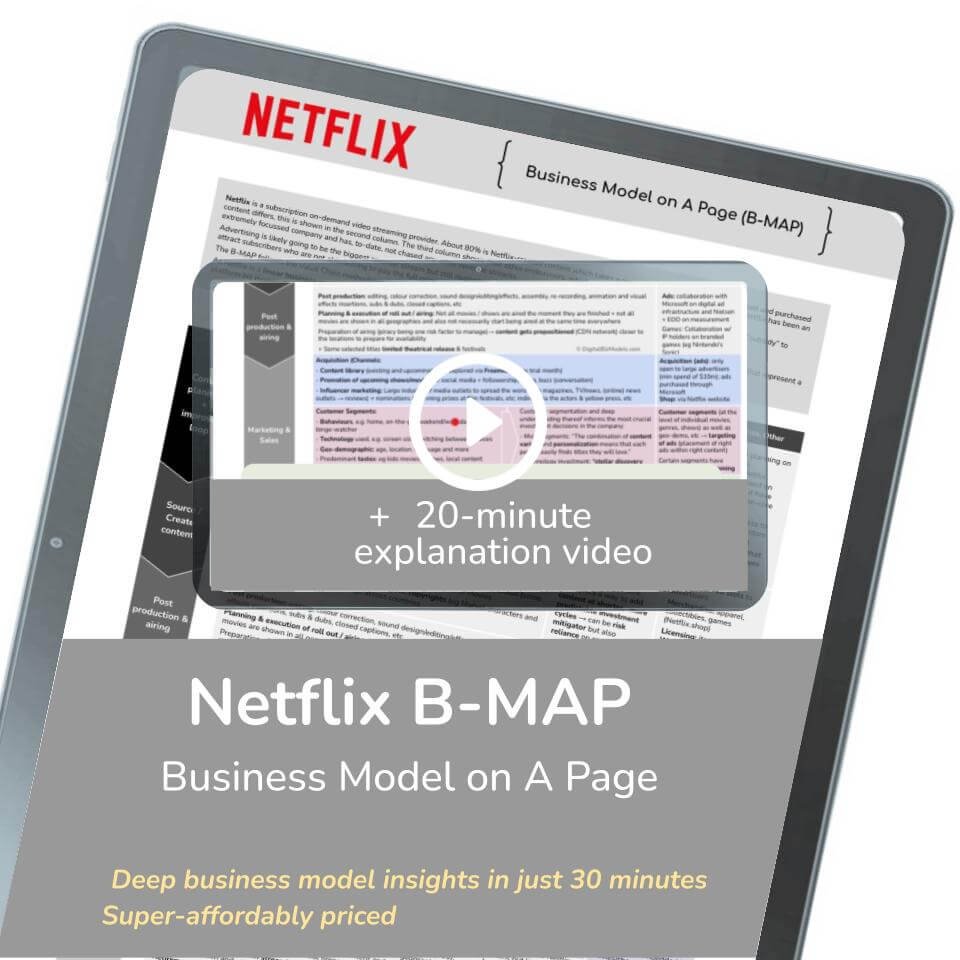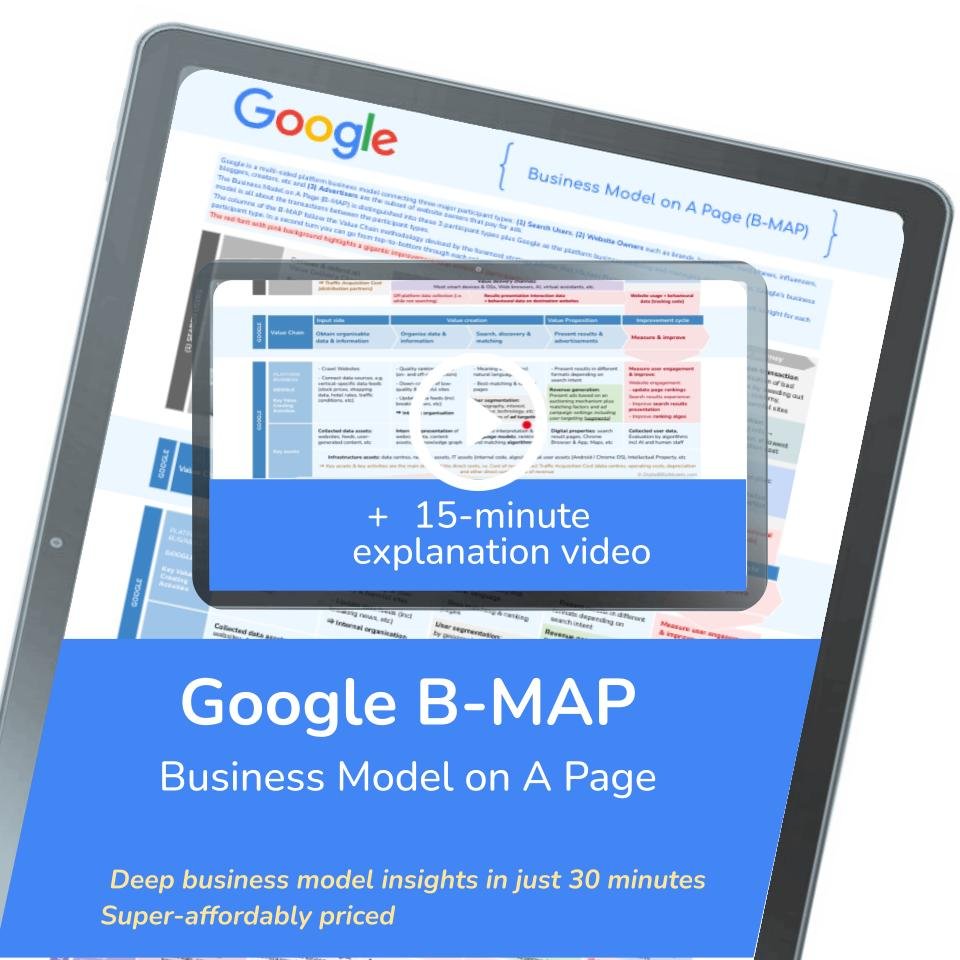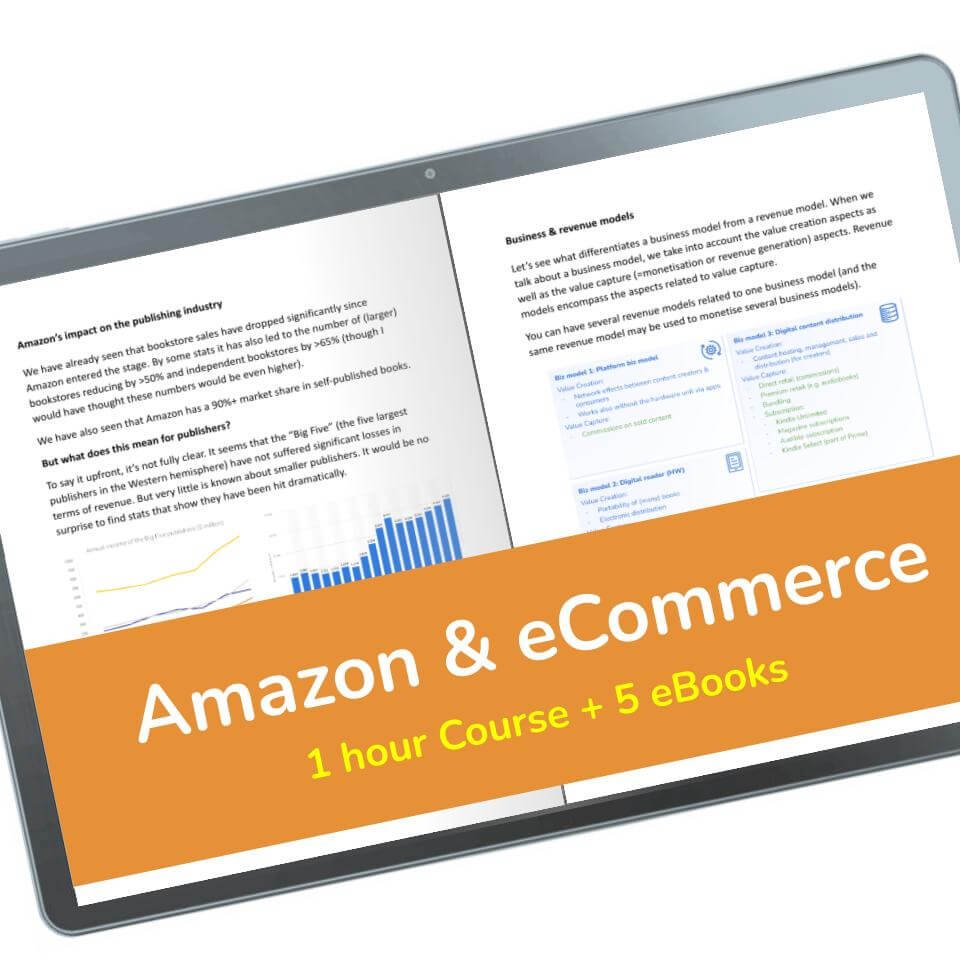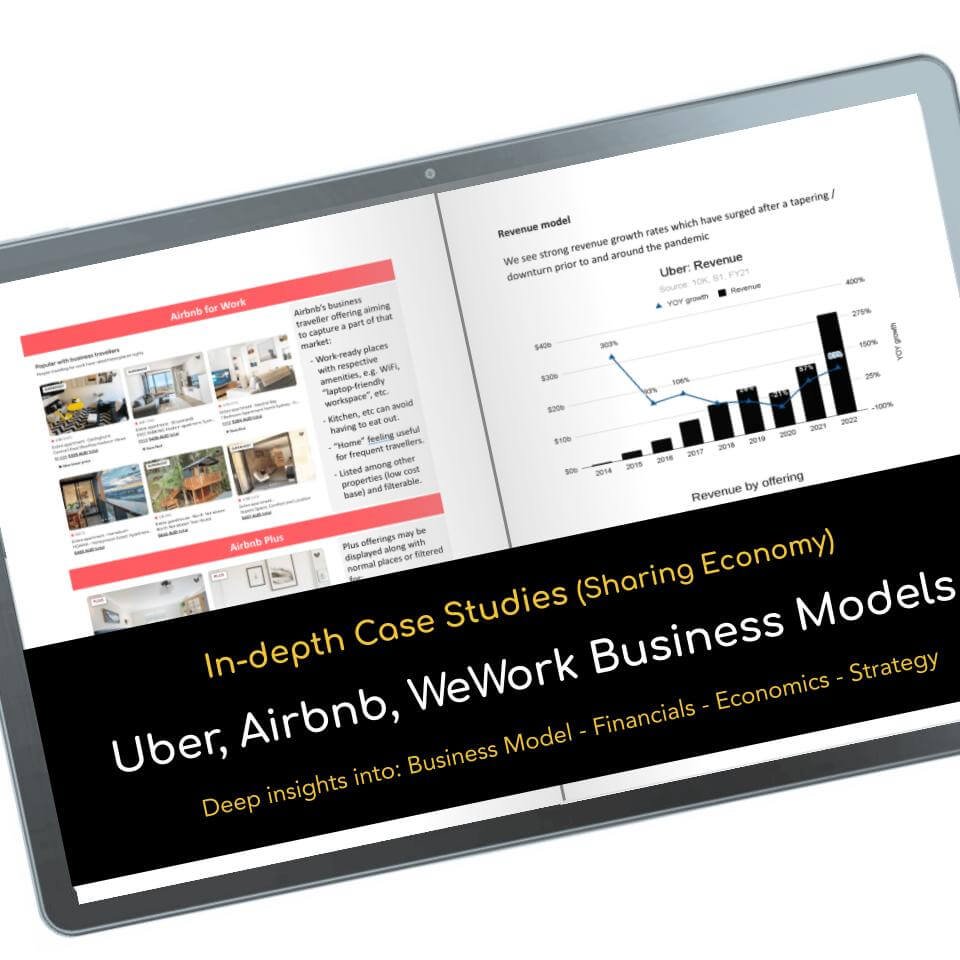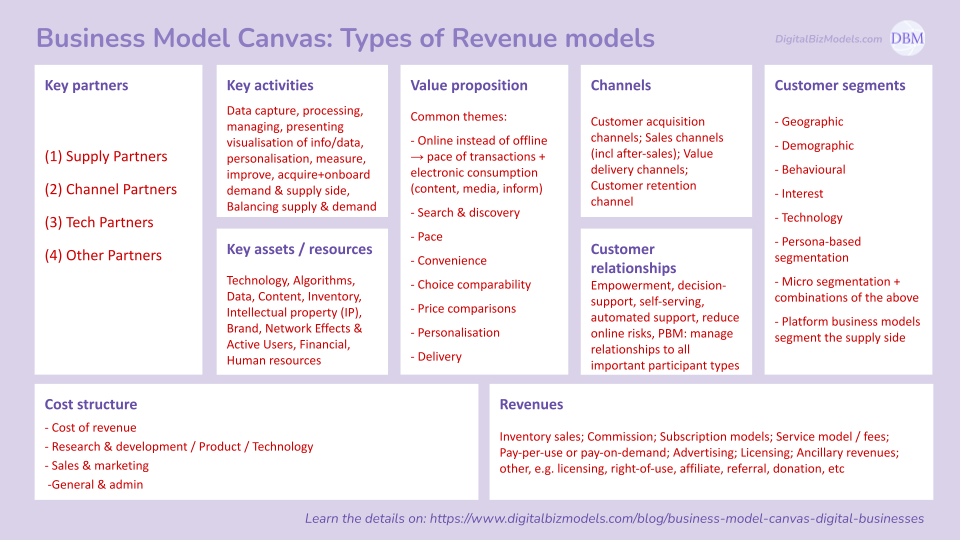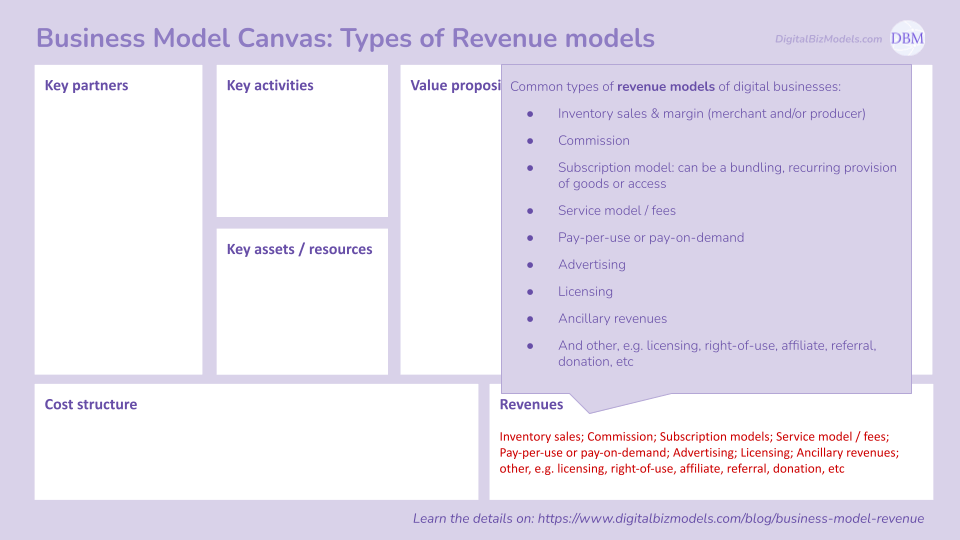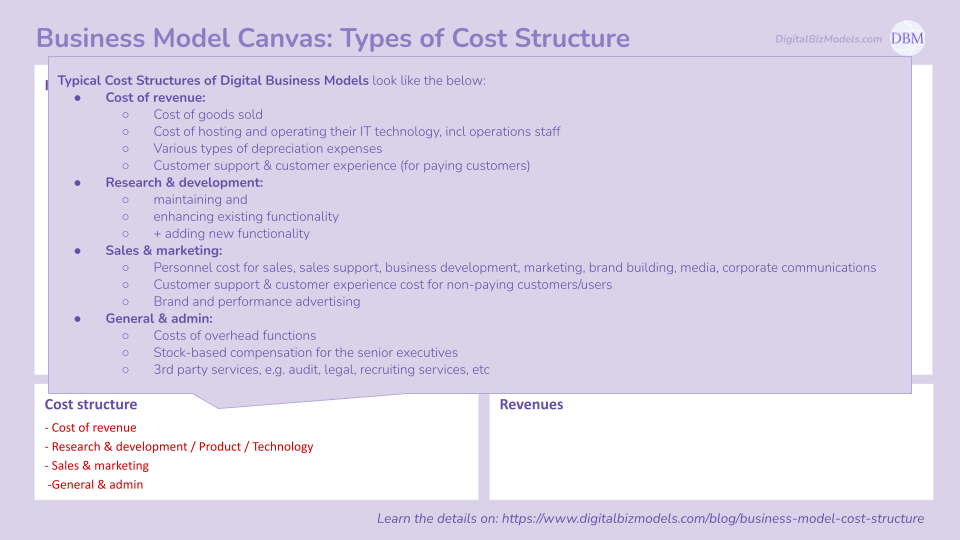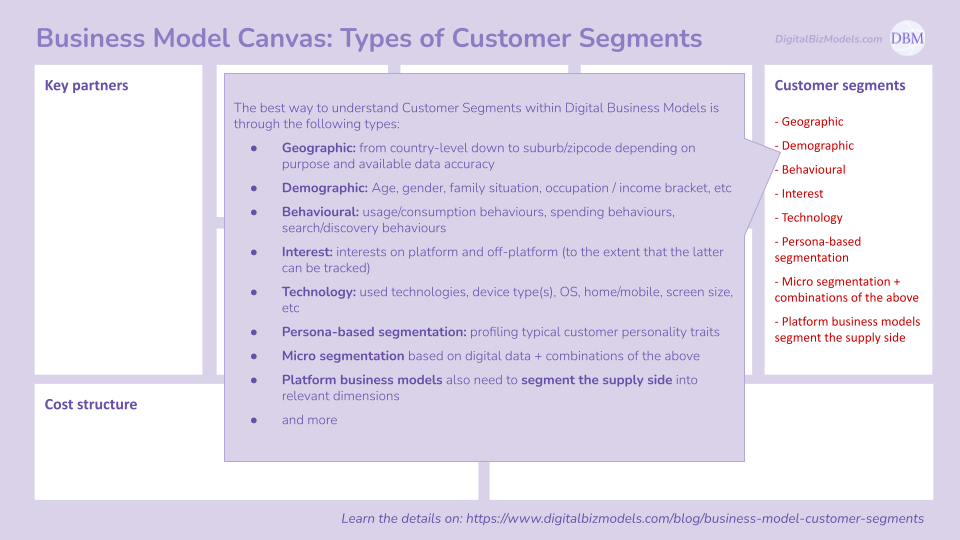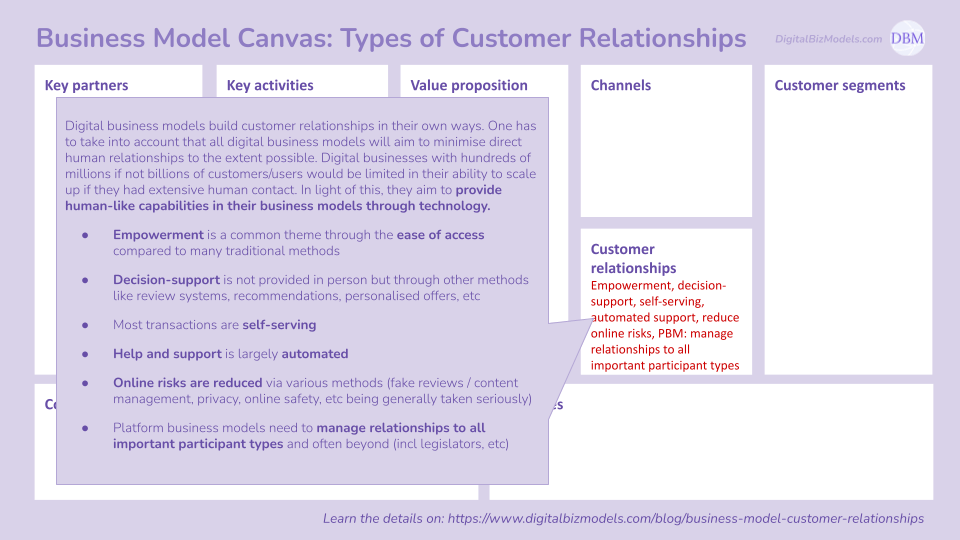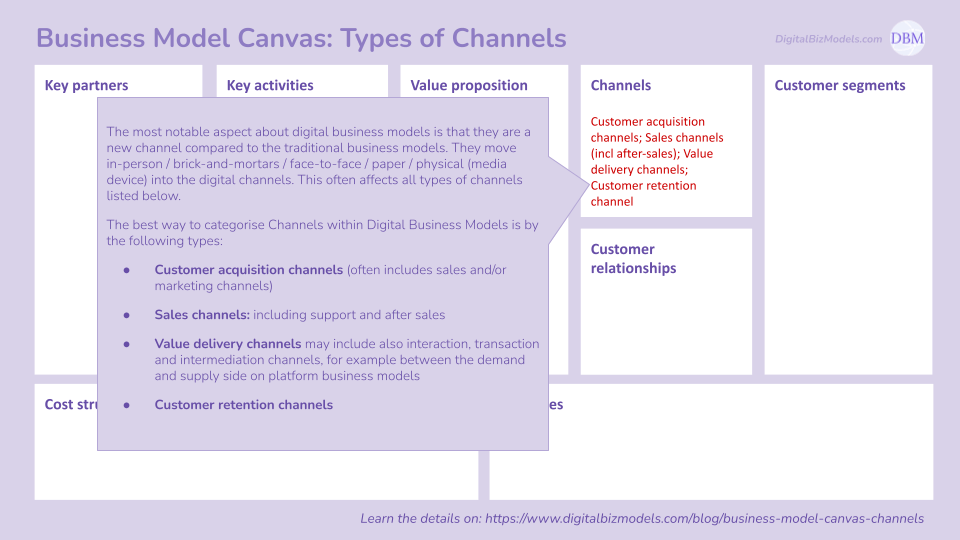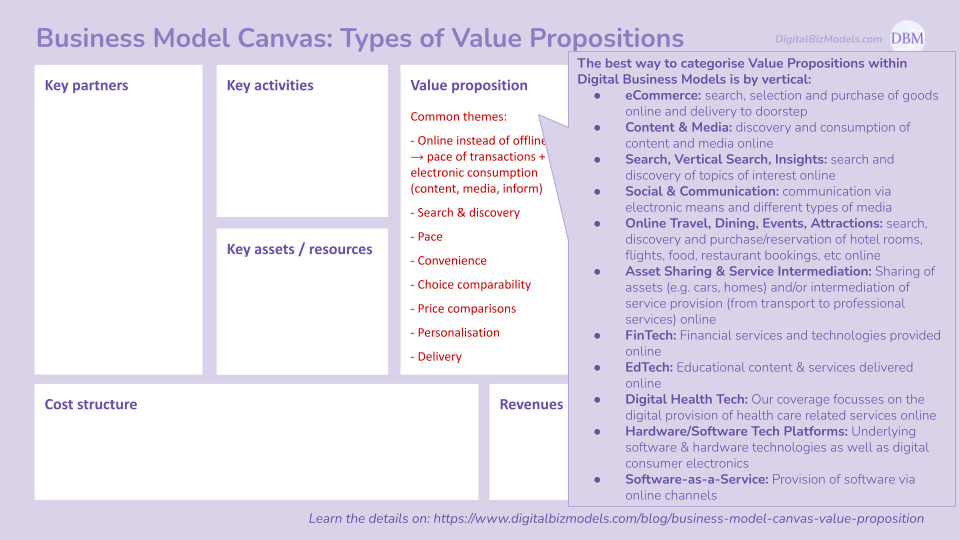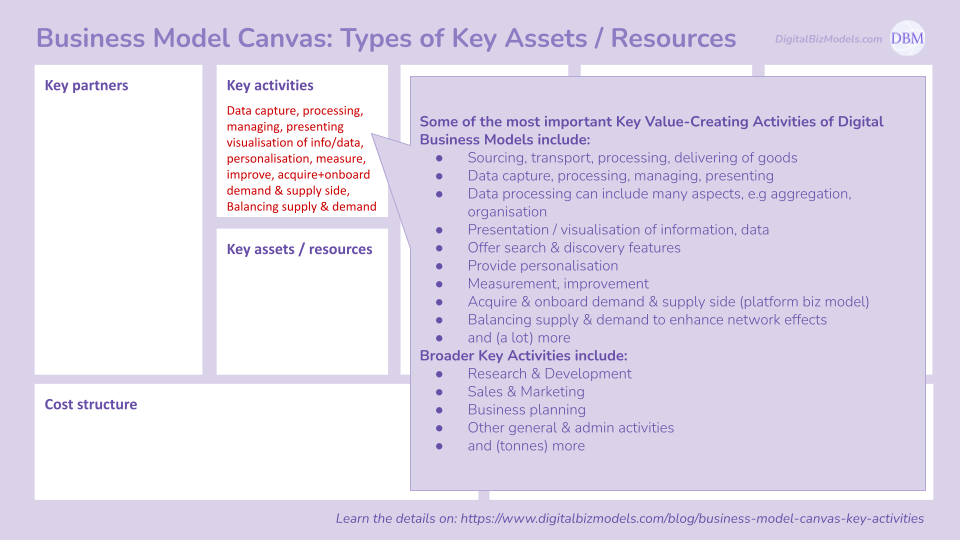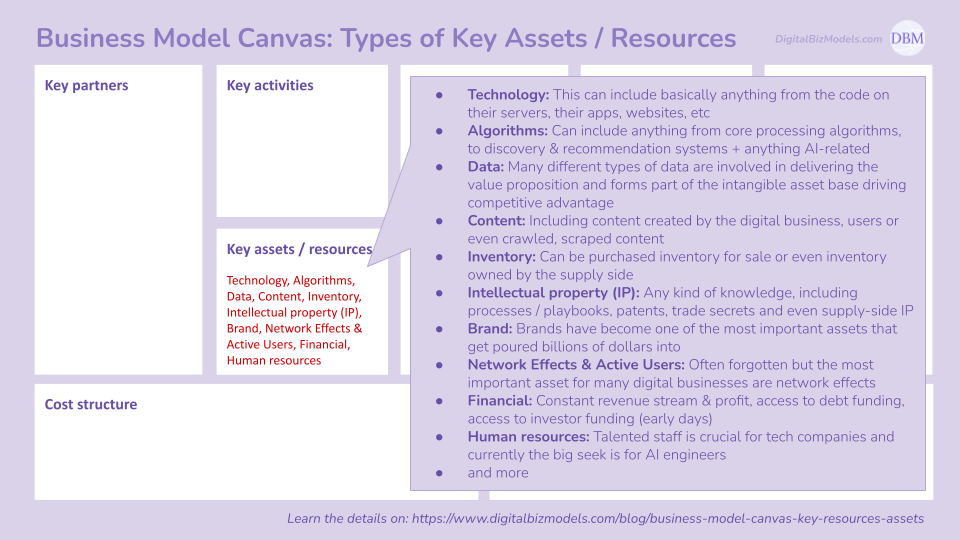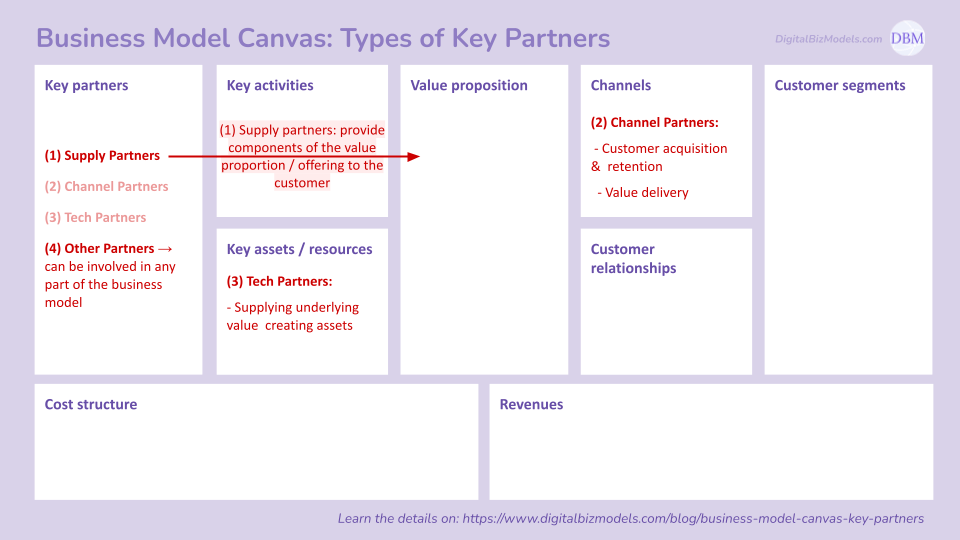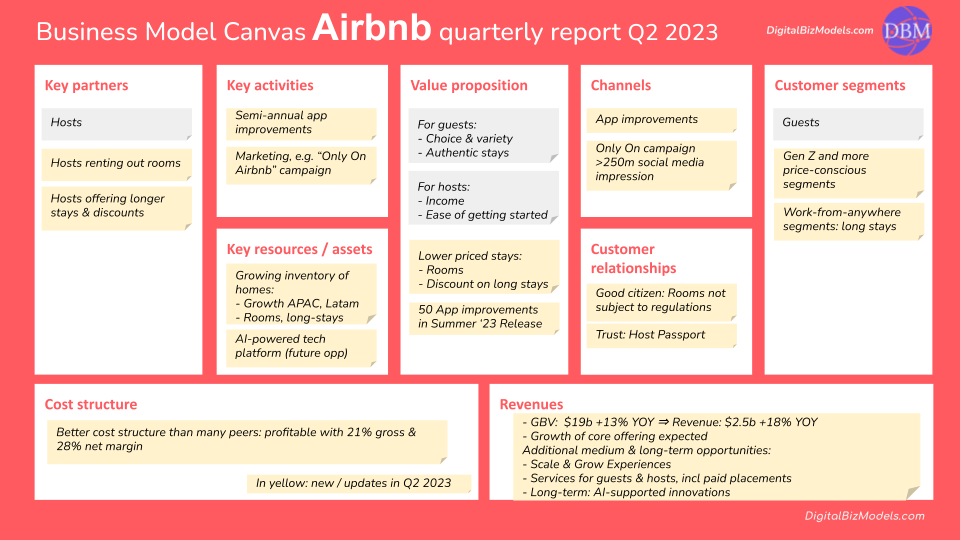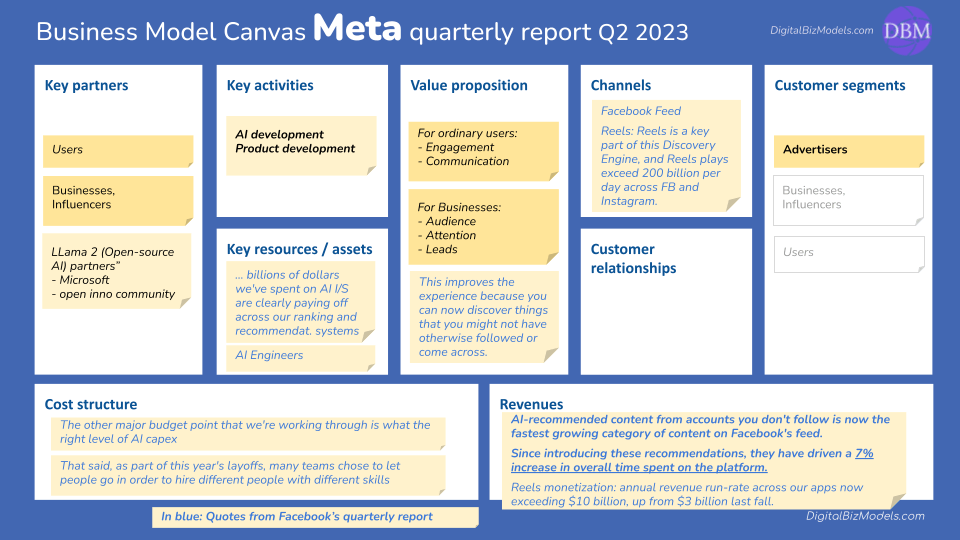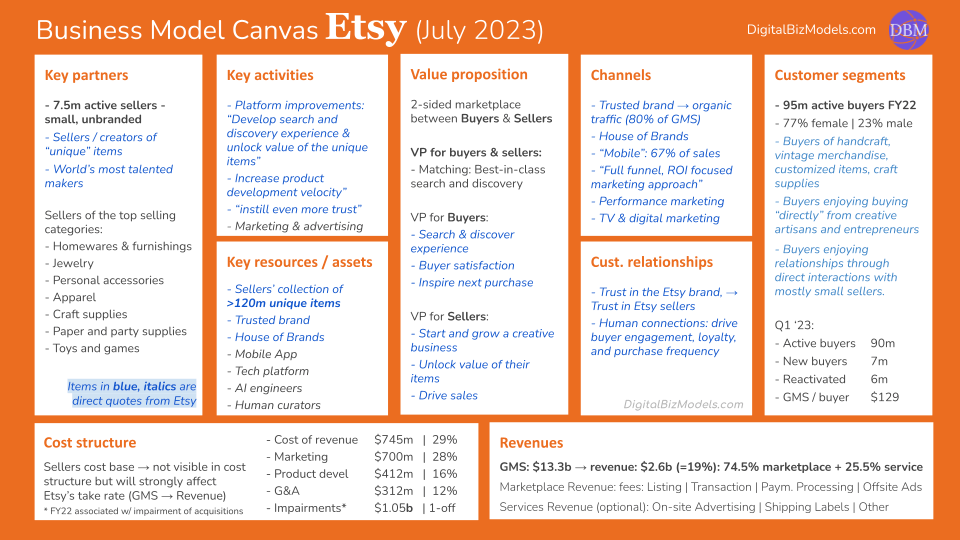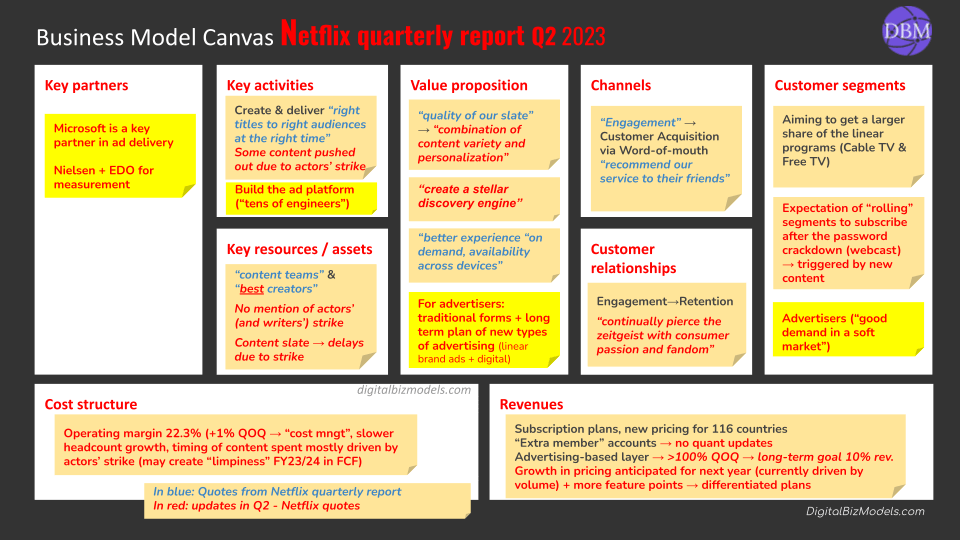Biz Model Canvas Booking.com
Booking.com is the largest Online Travel business as well as the largest travel business by market cap. They create value by helping users on their selection and booking process of hotels (and other accommodations) and monetising on commissions (between 15-25%) of the booking value. They are a gigantic demand aggregator that is present on all digital channels through which travellers look for accommodations.
Travel is a $1.3 trillion industry. This is gigantic. And the biggest player by market capitalisation in this huge pond is the Booking.com’s parent, the Priceline Group. Priceline owns a number of brands that are all running a platform business model (the most promising business model right now).
Booking.com and Expedia are the biggest Online Travel Agencies (OTAs). We have compared their business models here. But this space is becoming more interesting by the day with an increasing amount of players moving into this space, including TripAdvisor and Google.
What makes Booking.com so successful despite the enormous competition by similar and other business models and a strong pushback by the major hotel chains? That is what we will be looking at today.
Online travel, dining, events & attractions are demand-aggregating channels to help on the customer decision making journey. Approaches include booking apps, planning apps, price comparisons, deals, specialisation on selected geographies, activities / hobbies / events, car rental, user-generated review platforms and more.
Overview
This articles is structured in line with the elements of the business model canvas:
Sub-brands
Before we get started on Booking.com, let’s have a brief look at the other brands within the Booking Holding:
Booking.com: online accommodation reservations
Priceline.com: combined packages for hotel, rental car, airline ticket and vacation reservation (in the US)
Kayak.com: travel meta-search engine
Agoda.com: online accommodation reservations (in the Asia-Pacific region)
Rentalcars.com: rental car reservation service
OpenTable: restaurant reservation and information services
Note that sometime we refer to Priceline in this article. A few years ago the overall holding of all these brands ran under the name Priceline. It now is Booking Holdings and Priceline is a brand better known in the US.
Our Flagship Course
Value Proposition
Value proposition to travellers
Cheap(est) prices: Booking.com has contracts in place with the hotels that it lists. One of the clauses, called rate parity, is that the hotels can’t offer the same (type of) room at a cheaper rate on the hotel’s web pages. And if they do so they have to match it on Booking.com. Without such a rule, users could choose a hotel on Booking.com but then complete the booking on the hotel’s pages. Despite some changes in this space, Booking.com is still able to offer the cheapest prices on those hotels it most prominently features.
Amount of choice: Booking.com has now over 1 million places to stay in their database and a large amount of filtering options that make it easier for the user to find what they are after. Moreover, Booking.com helps consumers to make value choices.
Reduction of risk: the star rating and reviews generated (over 100m reviews to date) by other users reduce the risk of being disappointed. Booking.com features reviews only from those who have booked through them. This system effectively prevents manipulation, a problem well known on many other platforms.
Call centres: Many people still want to talk to a human prior committing to a considerable amount of money. Two-Thirds of Booking.com’s employees are in the customer service areas for this reason.
Useful app: the traveller’s journey does not end with the booking. Booking.com’s app has useful content prior to the booking but increasingly also travel guide functionality in their app. Also, bookings through apps have multiplied from 2015 onward and are expected to stay in the double-digit growth space.
Value proposition to hotels
Hotels have a love-hate relationship with the OTAs. While a majority of their bookings come through other channels, OTAs remain crucial to get as close to being fully booked as possible*.
Incremental revenue: the key value proposition is that Booking.com helps to fill otherwise empty-staying rooms. Hotel rooms are like perishable goods. If they are not booked on a night the revenue for that room that night is irrecoverably gone. With hotels being high fixed cost assets, this loses the room’s contribution to the high fixed cost base.
Ability to react: Booking.com allows hotels to implement their revenue management strategy by providing the ability to flexibly decide/change which rooms they offer through Booking.com on which nights and its rates. This allows hotels to drive additional business on a short fuse, to put up special promotions, and dynamically adjust commission for soft periods to rank higher.
Global reach: Booking.com helps hotels to reach global markets and potential customers that by themselves they would not reach. Achieving global reach in a meaningful way (i.e. high conversion rates) requires investments that may be underestimated. Booking.com have localised content, payment options, apps, etc. They also translate the hotel content into the local language (~40 languages done by a localisation team) and are present on the relevant advertising channels. The Priceline Group have acquired local online travel agencies who have captured a meaningful local market share and built a recognised brand. They have offices in many countries, an online presence in over 220 countries, feed their mobile apps and keep all the content consistent.
Risk reduction: Fees are structured in a way that there is no upfront payment and no payment whatsoever unless there is a booking. Unlike in online marketing, there is no risk of paying money for advertising for no return. Cost-per-click models that I have described previously come with the risk of no or low returns.
Drive additional traffic to the hotel’s website (“billboard effect”): One prominent study came to the conclusion that there are is a considerable amount of travellers who research on the OTAs, like Booking.com, but then book on the respective hotel’s website. Thus, the OTA pays for the customer acquisition cost (CAC) but generates no revenue for themselves. This effect is called “billboard effect.” More recently, other studies have questioned that this effect (still) exists. It is ultimately hard to measure due to the hundreds of micro moments over which the customer journey unfolds. But there are two things I am very certain of:
Being present on an OTA with good ratings will have positive effects.
Bookings will take place where the customer gets additional benefits (loyalty benefits, perks, freebies) – at the same price, be it on the hotel page or on the OTA pages.
Market intelligence: Booking.com shares market intelligence, booking forecasts for given locations as well as how the hotel is performing on the Booking.com platform in relation to competition.
* Some of the most important KPIs in the hotel industry are Average Daily Rates (ADR) and Revenue Per Available Room (RevPAR). For the purposes of this article, note that “fully booked” means maximising these KPIs
Learn more about the value propositions of digital business models here.
Free Downloads
Key Partners
Hotels or property owners: Booking.com sees anyone who registers their property to be bookable through them as a partner. And there are many types of properties that fall into this (hotels, villas, golf courses, castles, boats, capsules, tents and more).
Major hotel chains: Hotels – esp major chains – have a love-hate relationship with Booking.com. Sticky points are commissions and customer data.
Affiliates: Booking.com runs an affiliate program through which those websites make a commission (on Booking.com’s commission) should their webpage originate a booking. They offer various products to their affiliates. This helps Booking.com grow into the non-OTA areas that still manage a lot of the market.
Travel agents: Booking.com wants travel agents to book through their platform and earn commission through it. Benefits for the agents are no upfront costs as well as no additional operational costs.
Corporate travel managers: Booking.com offers an option for corporate travel managers to make bookings on behalf of their employees. They have not entered the travel market business in earnest. But surely, it will be an area of interest to drive growth even if not top on the strategy agenda right now.
Technology partners: I classify only those tech providers as key partners that provide cutting-edge, proprietary (and ideally exclusive) technology and actively collaborate as key partners. There are not many as such as Booking.com develops most of their software in-house and relies on acquisition where complementary platforms emerge. Global distribution systems, channel managers and reservation systems as such are in my mind not key partners as we are talking about well-established interfaces in this space.
Meta search engines: Meta search engines are becoming increasingly important. Priceline own one of the biggest ones, Kayak.com. Booking.com collaborates with TripAdvisor and Google Hotel Ads who are two of the other big ones.
Lobbyists: lobbyists play a big role in the tug-of-war that I have linked to above
Learn more about key partners in digital business models here.
Accommodation providers are key partners of Booking.com and key to positive indirect network effects [source: Priceline investor presentation]
Key Activities
The biggest difference between traditional business model and the platform business model are indirect network effects. Key activities have to aim to enhance these. Of course, Booking.com knows this very well. From their investor presentation, you can see how they see the positive indirect network effects.
Enhance positive network effects and customer experience by increasing:
the number of bookable accommodations at an increasing amount of locations
the types of bookable properties (variety)
useful content, such as user reviews, pictures, etc
and by enhancing customer experience
Provide great customer support
Improve the websites and the app based on the captured data and evolving technology, trends and feedback
Improve conversion rates based on data and over 1000 experiments at any given time
Accompany the micro moments on the traveller’s customer journey
Search engine visibility: Maintain top rankings on paid advertising and improve on organic search rankings
Observe the moves of hotel chains who want to increase direct bookings
Grow loyalty programs to counter the hotel chains loyalty program and to obtain valuable customer data
Develop new travel-related services to grow partner and customer base
Observe regulatory landscape and moves of lodging lobbying groups
Observe industry landscape for new entrants and adjacent industries for new/potentially disruptive approaches (e.g. meta search engines)
Observe the moves of the known direct competitors
Stimulate demand through promotions/notifications to subscribers
Technological lead helps Booking.com to accompany the traveller’s journey to hotel selection across devices and micro moments [source: Priceline investor presentation]
Learn more about key activities in digital business models here.
Key Assets / Resources
The master resource of your platform are its network effects which are enabled by the participants, the content, the data/algorithms, skilled staff and the website/app infrastructure:
Number of hotels and other accommodation partners available for booking
Number of locations covered
Engaging content: high-quality, professional photos, good hotel descriptions incl all amenities&facilities
Fresh user-generated content: reviews, ratings
The captured user data and proprietary algorithms
User experience (UX) of the website and app
The global network of Priceline-owned peer-platforms
Skilled technology staff (>2500 technology staff)
The loyalty program and its members
Affiliate program members
Trained customer services staff (2/3 of all employees)
The website and app infrastructure and all the interfaces to the various hotel/flight/rental car/ etc distribution systems
Choice, content, localisation allow high conversion rates thus enable Booking.com to auction cost-per-click advertising higher than others and get traffic and bookings [source: Priceline investor presentation]
The Booking.com webpage key to achieving high conversion rates that allow auctioning for rank #1 in Google and Bing advertising spots. It is full of persuasive webelements to close the sale. Click image for full size..
Learn more about key assets & resources in digital business models here.
Customer Segments
In the platform business model, there are two or more sides that should be considered customers (or partners and customers). Let’s start with ways to segment accommodation providers:
Property types: hotel, resort, apartment, villa, Hostel, motel
Room types offered
Star rating 1-5; user rating -10
Amenities (fitness, sauna, jacuzzi, pool, beach), facilities (wifi, restaurant, cafe), room facilities
Proximity to sights (or remoteness)
Type of hotel: Independent, small chain, large chain,
Locations: Single location, multi-location, multi-national
Type of infrastructure: property management system, central reservation system, channel manager, etc
There are many ways to segment travel customers. Here are a few examples:
Travel motivation: Leisure, business, group
Demographics: Age group, gender, marital status, kids, income bracket, lifestyle, etc
Booking details: length of stay, how many days prior booked, booking device, booking location, package/accommodation only
Employment: income bracket, full-time/part-time, retiree
Spending behaviours: ancillary bookings/spending
The issue with this is that the data required for the above type segmentation is disbursed across the multitude of players in the industry (or not known) and will not satisfy the recommendations of effective segmentation:
identifiable so that they can be measured & tracked
accessible by communications and distribution channels
substantial so as to be profitable
durable to maintain stability of cost and impact to profits
Therefore, traditionally you will find a more transaction-centric way to segmentation.
All this said you can sense that there is a great opportunity in this space (and some airlines have built their capabilities in this space very well through their loyalty programs).
Once you have a rich data set, you can segment and micro-segment depending on the problem you are trying to solve. For traditional advertising and targeting purposes, segments should be at least 10-15% of your visitors. But for more innovative and personalised purposes, your micro-segments can be smaller.
Let’s conclude with the reminder that good segmentation is a powerful enabler for effective revenue management.
Learn more about the customer segments of digital business models here.
Channels
Booking.com’s sales channels to their customers:
The Booking.com webpage
The mobile-optimised webpage
The Booking.com app
TripAdvisor (Cost-per-acquisition model)
Ad channels:
General search engines, Google, Bing:
paid advertising
organic search ranking through useful content
other OTAs
TripAdvisor (Cost-per-click model)
Meta search engines:
Kayak.com
Google Hotel Ads
other
Communication, content and other channels:
iTunes App Store, Google Play Store, etc for their app
eMails for direct communication with their customers
Useful content, e.g. Booking.com’s destination finder pages
They have a broad range of inspirational articles with links to city overview pages and hotels
Learn more about the channels of digital business models here.
Customer Relationships
Relationships with hotels
The relationships with the hotels is that of a love-hate relationship
Hotels are unhappy about the amount of commission they have to pay for bookings through the OTAs
Due to this ambivalence, Booking.com makes it very easy to join their platform
They make sure there is no risk for the hotel (no booking, no fees, no set-up fees at all, etc)
They give “instant gratification” to those that join by making them visible globally, translation to other languages, etc at no cost
Relationship with travellers
Customer service (two Third of Booking.com employees are in customer services)
Ensure content and reviews are representative of the actual accommodation
Remove all friction and risk
Transparency
Privacy
Owning the customer relationship is one of the most important things that all platform businesses have to keep in mind. And when we say that we, most tangibly, mean their contact data (i.e. email address). This is crucial for the ability of repeat-, up- and cross-sales.
Hotels would love to have the customers email-address once they book through Booking.com. This would give them ample opportunity to build a customer relationship, to cross and up-sell themselves and get ancillary revenue etc. This is one of the reasons why hotels entice their guests to sign up to their loyalty program.
But it also is an area of trials. As an example, Expedia and Red Lion Hotel have started collaborating on their loyalty proposition as part of which Expedia shares more information with Red Lion (most notably the customer’s email address).
Learn more about the customer relationships of digital business models here.
Revenue / monetisation
The Online Travel Agency business is characterised by two predominant business models and then some other:
Subscription business model
Other (e.g. travel insurance fees, marketing and business analytics services)
Booking.com generates most of its revenue through the agency model where each reservation incurs a commission (they also generate some ad, merchant and other revenues but these are a very small percentage). Here are some examples where Booking.com and the other subsidiaries of the Priceline Group use the above business models:
Reservation of accommodation, rental cars, etc generate commissions and fall into the agency business model
Priceline’s Name Your Own Price and package deals fall under the merchant business model
Their meta search engine Kayak.com earns advertising revenues on a cost per click pricing model
OpenTable earns commissions but also subscription services for their reservation management system
Travel insurance fees which for now I am not going to elaborate further on
Revenues generated by Booking.com’s BookingSuite accommodation marketing and business analytics services
Online travel booking is capturing an increasingly larger share of the >$650b accommodation booking market [source: Priceline investor presentation]
Priceline believes that travel booking is in a secular shift from offline to online booking. On global level online booking accounts for <40%. In the US, online bookings have now captured over 50% market share. Some analysts expect that it will now taper but that other countries will catch-up to similar levels. A case might be made that where there is no strong tradition of offline travel agencies, the online space may capture an even large share.
From their annual report, you can see that the majority of Booking’s revenues come from Booking.com using the agency business model:
Agency business model: $7.98b/$10.7b = 74%
Merchant business model: $2b/$10.7b = 19%
Advertising and other revenues = $0.7b/$10.7b = 6.6%
Learn more about revenue generation in digital business models here.
Cost Structure
Let’s look at Booking’s annual report to understand their operational cost structure. Note, that they don’t split out Booking.com’s costs separately. Hence, we have to take things at an aggregate level. With Booking.com being the largest entity, we still get a good feel for the numbers.
Operating expenses
Booking’s operating expenses from their annual report (pg 71):
Performance advertising: $3.4b
Brand advertising: $0.29b
Sales and marketing: $0.43b
Personnel, including stock-based compensation of $0.24b, respectively $1.3b
General and administrative: $0.45b
Information technology: $0.14b
Depreciation and amortization: $0.3b
Capitalised costs
Booking’s capital expenses from their annual report (pg 71)
We are not interested in all their capital costs (capex). But let’s have a quick look at capex in relation to their website/app development shows overall capitalised costs of $54.2m. In the balance sheet, direct website/app assets are recorded as property & equipment.
Property & equipment: $347m
Intangible assets: $2b
Goodwill: $2.4b
Learn more about the cost structures of digital business models here.
Business Model Canvas Booking.com
And here is finally the summary Business Model Canvas for Booking.com
